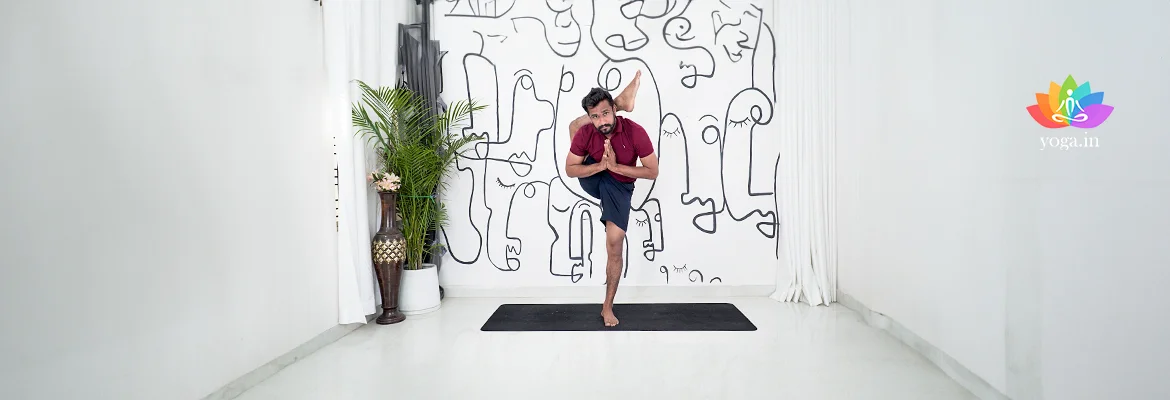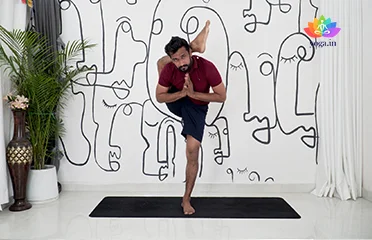Sit with your leg stretched out on the floor with your back erect.
Introduction to the Asana
The Sanskrit name is derived from the word Durva (दुर्वा) which is the name of a Rishi/ saint (ऋषि, R̥ṣi) and asana (आसन) meaning posture or seat.
Step to get in the pose
-
-
Bend the right knee and squat by resting the palms on the floor.
-
Then rest the palms on the left thigh.
-
Exhale, press the palms on your left thigh, pull your left leg up slowly and place it behind your neck (or shoulder blade).
-
Keep it erect by making the muscles taut.
-
Pull the waist and chest up, fold the hands in the front of the chest and balance the body on the right leg.
-
Breathe normally.
-
Hold the posture as long as you can and then return to the floor.
-
Inhale and come out of the posture, slowly exhale, and sit down in the same manner.
-
Relax before you repeat the same with the other leg.
Common mistakes and pitfalls
-
Collapsing and sinking into the lower back, compromising on the body stability.
-
Not engaging your core muscles to lengthen your spine and lifting your chest.
Benefits
-
Strengthens, stretches and promotes flexibility to the hamstrings and spine.
-
Strengthens the muscular, nervous and circulatory systems.
-
Stimulates the liver and kidneys, aids in digestion and detoxification process.
-
Reduces fatigue and stress.
-
Improves balance and concentration of the mind.
Contraindication
-
Avoid in case of any chronic injury, pain or medical history in your knees, hips, neck or back.
-
Avoid if you have high blood pressure or heart conditions.
-
Avoid in pregnancy and menstrual cycle.
-
Avoid in case of vertigo or balance issues.
-
Avoid if you don’t have the strength or flexibility to perform the pose.




